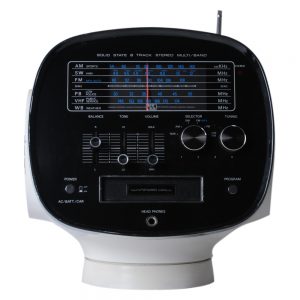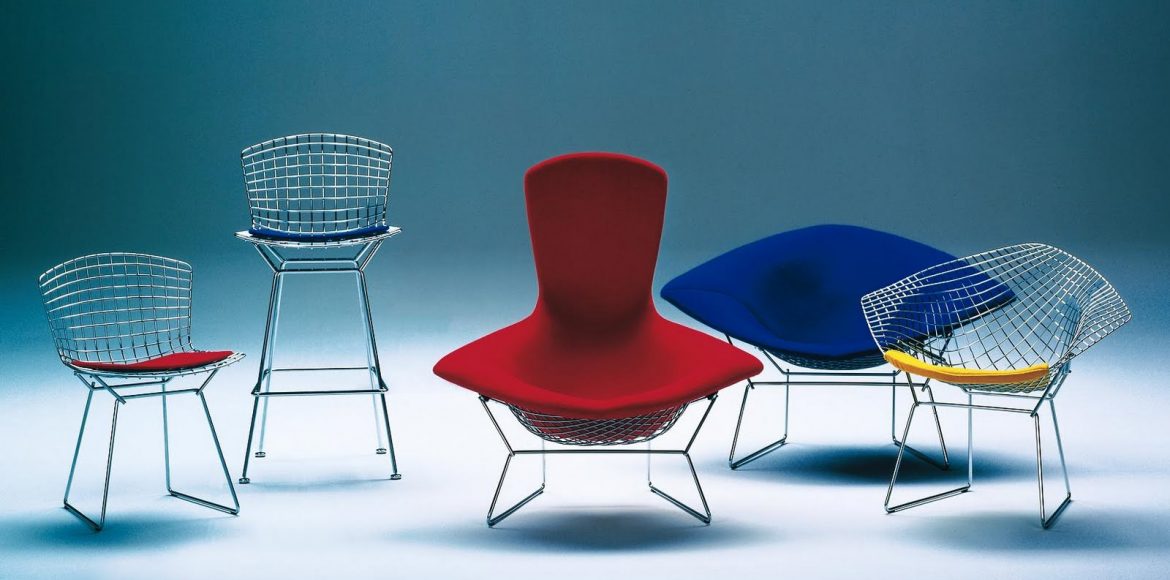 Although the first man-made rocket to breach the boundaries of space was the German made V-2 rocket in 1942 Space Age is considered to have begun with the Soviet Union’s Sputnik satellite in 1957. The fear of the Cold War (1946-1991) and the imaginations of the Western world at the time surrounding the race into space dramatically influenced popular culture. From fashion, product, graphic and interior design to music and technological advances – the world from the mid 50s to the late 70s was fixated on Space Age. Tie in the psychedelic qualities of the 60s and you easily have a revolutionary departure from the calm pastels and utilitarian designs that accompanied the “white flight” of the growing suburban 50s.
Although the first man-made rocket to breach the boundaries of space was the German made V-2 rocket in 1942 Space Age is considered to have begun with the Soviet Union’s Sputnik satellite in 1957. The fear of the Cold War (1946-1991) and the imaginations of the Western world at the time surrounding the race into space dramatically influenced popular culture. From fashion, product, graphic and interior design to music and technological advances – the world from the mid 50s to the late 70s was fixated on Space Age. Tie in the psychedelic qualities of the 60s and you easily have a revolutionary departure from the calm pastels and utilitarian designs that accompanied the “white flight” of the growing suburban 50s.Many describe the bright colors, bold and transformative designs of this era commonly as mod, retro, or vintage. Perhaps those descriptions are misnomers as they never quite define Space Age. Astronaut helmets, flying saucers, planetary-referencing orbs, spaceships and satellites all became part of the pop culture landscape of the time. It could be said that few designs since have reflected a more futuristic optimism than these electronic gizmos of the past.
Here we take a look at how the Space Age influenced electronics. A common similarity is the absence of or high saturation of color. Until this point in design history, electronic devices – be that of the radio, telephone, record player, television and later the 8 track and reel-to-reel players etc. – were commonly pretty bland. Occasionally you’d have rouge aluminum-encased Victrolas designed by some early out-of-the-box thinker and great Bakelite radios from the art deco period, but all-in-all your options came in wood grain and black. The 50’s introduced a number of brighter plastic models but the standard corals and avocados were about as daring as the American consumer would or could buy. Space Age electronics were a departure.
It was no mistake that at this time the technological switch was being made from massive, heavy tube and circuit boards to Solid State. Designs from Europe, the Americas and all over Asia trickled into the magazine pages and then onto the department store shelves. That trickle soon turned into a flood as Asian manufacturers worked with willing superpowers to produce the fun objects that were not only design icons but also much more portable. Portability was key in the development and popularity of these items and consumers flocked to these new designs.
Considering collecting Space Age Electronics?
If ever on the hunt for Space Age electronics be sure to look for the following popular brands; Weltron, Aquatron, Philco, Grundig, Panasonic, Magnavox, Brother, Prominent and Wyndford Hall. Many more fantastic designs exist that were specifically sold to the European market. You may find that very similar designs have different brand names on them. This is because patents for the internal works were often sold or copied. Weltron could have produced the iconic 2001 model and then sold the patent to a Korean company who manufactured the same radio system but housed it in a different case.
A few details to keep in mind: The quality and condition of the case, missing knobs, tested working or not working units and most importantly – the condition of the battery compartment (you don’t want corroded and acid-filled units). If the seller of the unit notes that the sound is “scratchy” when adjusting the knobs – don’t worry! These sets are anywhere from 30-50 years old. Dust is normal and a quick trip to the electronics store can solve this problem. On the other hand, you could just enjoy the “sweet spots” on the dial where the sound comes in perfectly. Happy hunting!





